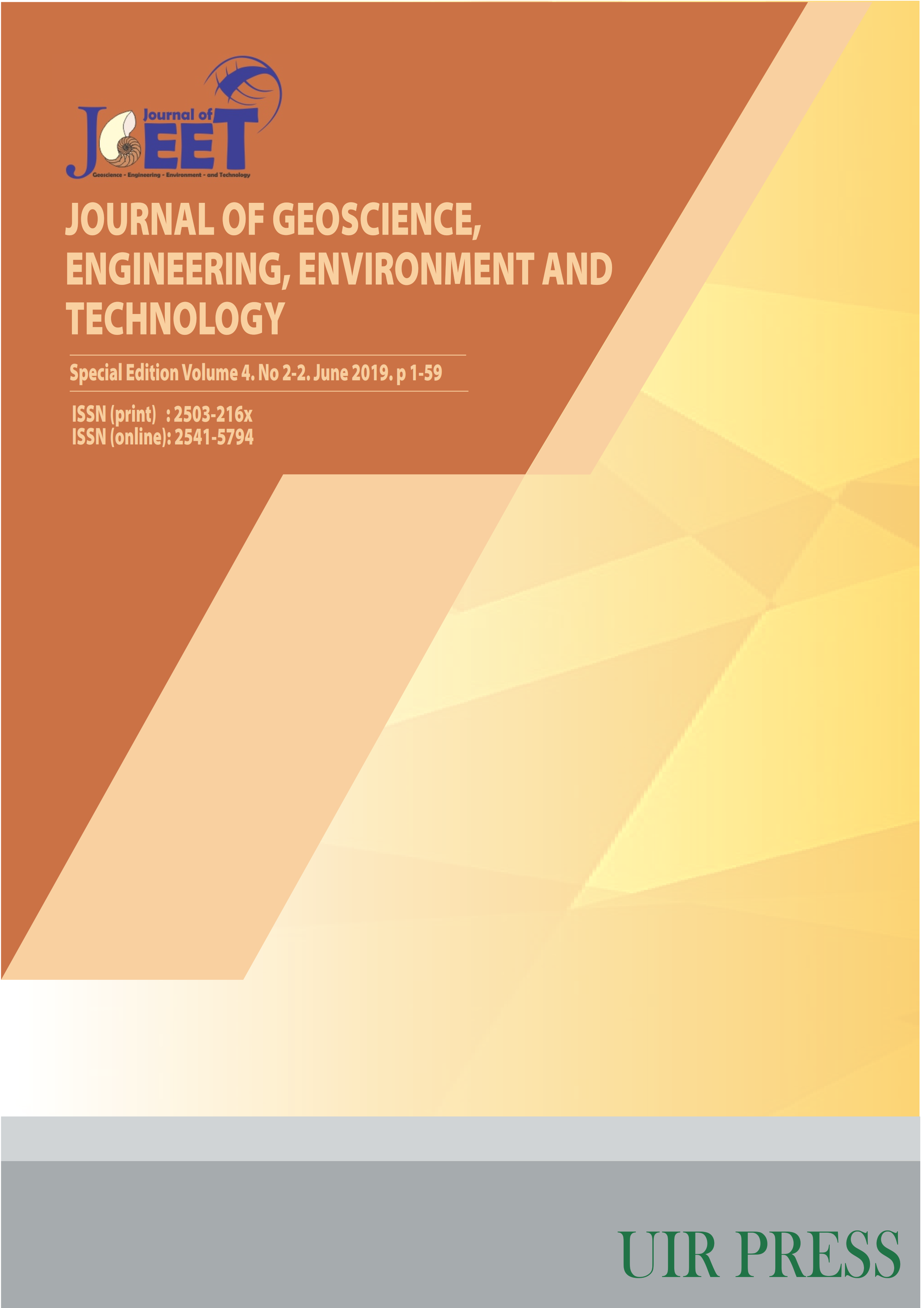New observations of Tin Mineralization Potential Vis-à-Vis Ore Petrographic, Alteration and Geochemistry in the Southeastern part of Bastar Craton, Central India
DOI:
https://doi.org/10.25299/jgeet.2019.4.2-2.2144Keywords:
Tin-mineralisation, cassiterite,, Katekalyan, Bastar craton, Central IndiaAbstract
The Tin mineralizations occur around the Katekalyan area, hosted in the acid magmatic rocks. The evolution differentiating granitic magma shows residual melt enrichment where end products intruded as pegmatites into the rocks. The different kind of pegmatite occur as simple unzoned, recrystallized (granitic pegmatite), and metasomatic greisenised and albitised pegmatites which emplaced within the pre-existing rocks of metabasic intrusive, granite (KG), granite gneiss (KGG). Sometimes it also found in metasediments as mineralised and non-mineralised characters along the fractures and foliation planes trending N-S, E-W and more frequently are observed NNW-SSE trends. Cassiterite is most important Tin-ore mineral and associated with pegmatites. Some cassiterite samples exhibit colourless to brown shades zoning which indicate multi stage growth. The cassiterite samples contain significant amounts of Sn, Nb, Ta with minor W.
The partial melting model shows that the variation 5 to 50% partial melting of bulk continental crust for KG as well as KGG rocks but bulk distribution coefficient for Sr (DSr) shows low i.e. <<10. The upper limit of partial melting of bulk crust estimates ~50 % for KG and KGG rocks are consistent with required rheological, critical melt percentage to leave the source region has decreased granite melt which were capable to mineralised tin ore elements. It is interesting to note that the SnF4 and SnCl4 probably not stable in presence of water under geologically reasonable conditions.
Downloads
References
Babu, T.M., 1993. Comparative studies of tin fertile granitic rocks in space and time. Resource Geology 43, 355–363.
Gasparon, M., Inuocentri, F., Hanneti, P., Peccerillo, A., Tsegaye, A., 1993. Genesis of the Pliocene to Recent biomodal mafic- felsic volcanism in the Debrezeyt area, Central Ethiopia: Vocanological and Geochemical constraints. Jour. African. Earth Sci. 17, 145-165.
Ginzburg, A.I., Ovchinnikov, L.N., Solodov, N.A., 1972. Genetic types of tantalum ore deposits and their economic importance. International Geology Review 14, 665-673.
Lehmann, B., 1982. Metallogeny of tin: Magmatic differentiation versus geochemical heritage. Econ. Geol., V., 77, 50-59.
Mishra V.P., Dutta N.K., Kanchan V.K., Vatsa U.S., Guha K., 1984. Archaean granulite and granite gneiss complexes of Kondagaon area, Bastar district, M.P. Rec. Geol. Surv. Ind., vol. 113, 150-158.
Mishra, V.P., Singh, P., Dutta, N.K., 1988. Stratigraphy, structure and metamorphic history of Bastar craton, Rec. Geol. Surv. Ind., vol. 117, Pts. 3 to 9, 1-26.
Murthy, K.S., Jaiswar, H.P., Jesani, R.S., 1982. Geology in relation to tin mineralisation in Bastar District, M.P. Presented at the Workshop on mineralisation associated with acid magmatism, Nagpur, Geol. Surv. India. Spl. Publ., No. 13, 61-70.
Ramakrishnan, M., 1990. Crustal development in Southern Bastar, Central Indian Craton, Geol. Surv. Ind. Spl. Publ., No. 28, 44-46.
Ramdohr, P., 1969. The ore minerals and their intergrowths”, Pergamon Press, New York, Braunschweig, pp. 1174.
Ramesh Babu, P.V., Dwivedi, K.K., Jayaram, K.M.V., 1984. Geochemistry of tin-rich granites of Paliam & Darba, Bastar, M.P. Proc. Fifth Ind. Geol. Congress, Bombay, pp. 313-319.
Ramesh Babu, P.V., Pandey, B.K., Dhana Raju, R., 1993. Rb-Sr ages on the granite and Pegmatitic minerals from Bastar-Koraput Pegmatite Belt, M.P. and Orissa, India. Jour. Geol. Soc. India 42, 33-38.
Singh, A., Singh, V.K., 2011, Petrogenetic history and Geochemistry of the Tin-bearing Granitoids of the southern Bastar craton, India. In: (Eds: Singh, V.K. and Chandra, R.) 2nd Proc. of Precambrian Continental Growth and Tectonism, Angel Publiation, New Delhi, pp. 111-124.
Singh, A., Singh, V.K., Singh, R.A., 2011. Petrographical studies Vis-a-Vis Tin-bearing granitoids, southern Bastar craton, India. In: (Eds: Singh, V.K. and Chandra, R.) 2nd Proc. of Precambrian Continental Growth and Tectonism, Angel Publiation, New Delhi, pp. 103-110.
Stemprok, M., Sulcek, Z., 1969. Geochemical profile through an ore bearing lithium granite. Economic Geology 64, 392-404.
Taylor, S.R. and McLennan, S.M. 1985. The continental crust: its composition and evolution. Blackwell, Oxford, 295 p.
Winchester, J. A., Max, M. D., 1983. A note on the occurrence of stanniferous granite gneiss in County mayo. Geol. Surv. Ire. Bull. 3, 113-119.
Downloads
Published
Issue
Section
License
Copyright @2019. This is an open-access article distributed under the terms of the Creative Commons Attribution-ShareAlike 4.0 International License which permits unrestricted use, distribution, and reproduction in any medium. Copyrights of all materials published in JGEET are freely available without charge to users or / institution. Users are allowed to read, download, copy, distribute, search, or link to full-text articles in this journal without asking by giving appropriate credit, provide a link to the license, and indicate if changes were made. All of the remix, transform, or build upon the material must distribute the contributions under the same license as the original.











